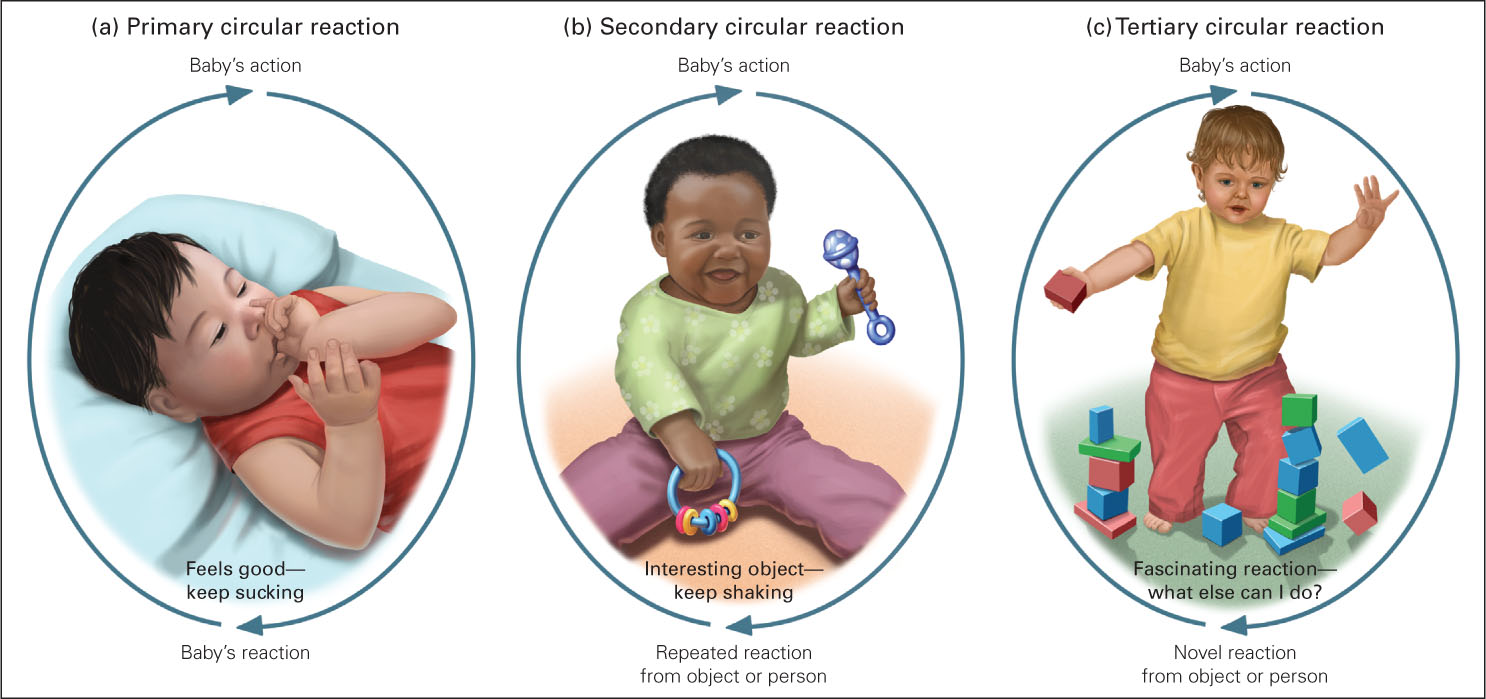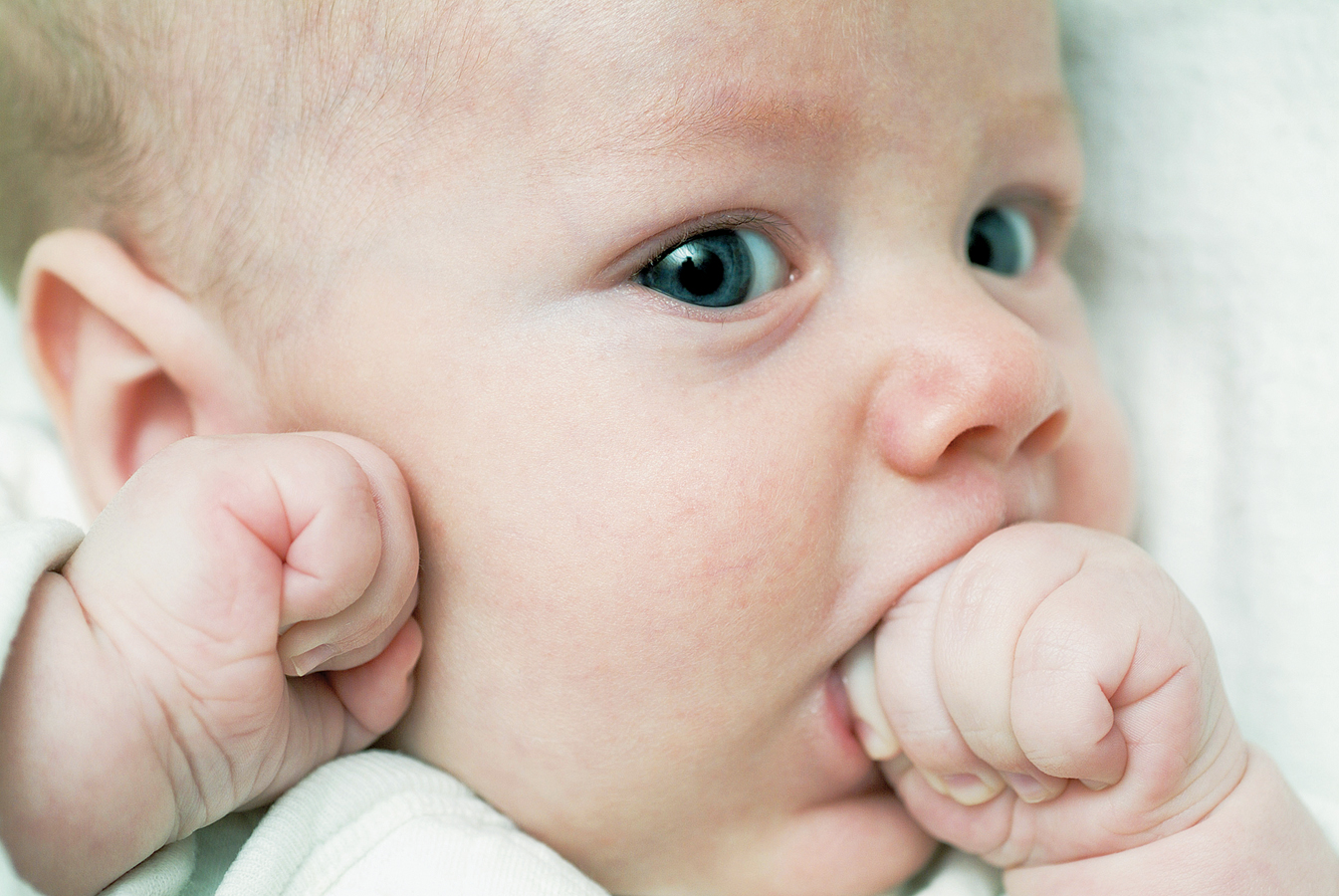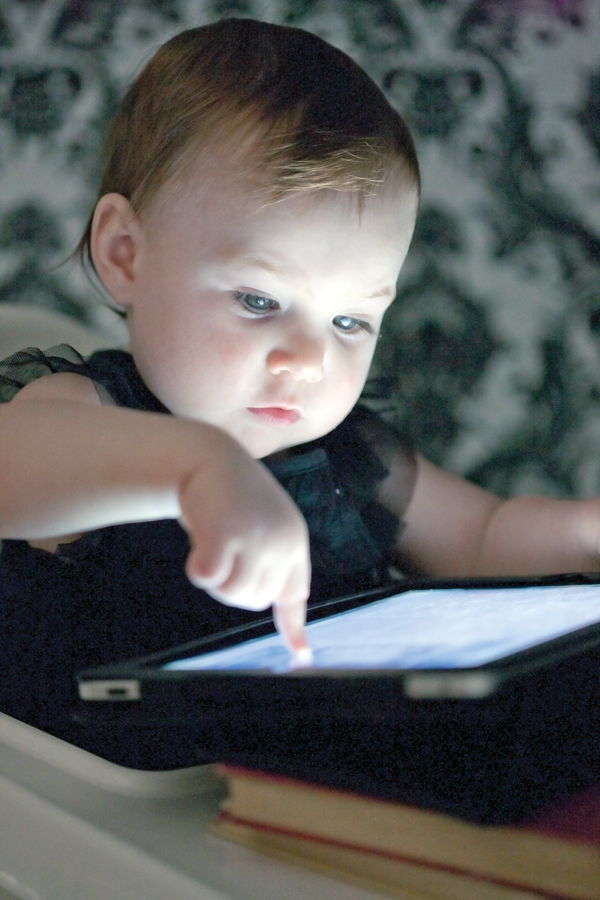 Sensorimotor Intelligence
Sensorimotor Intelligence
As you remember from Chapter 2, Jean Piaget was a Swiss scientist who earned his doctorate in 1918, when most scientists thought infants ate, cried, and slept but did not yet learn. When Piaget became a father, he used his scientific observation skills with his own babies, and, contrary to conventional wisdom (including that of Uncle Henry), he realized that infants are active learners, adapting to experience. His theories and observations have earned Piaget the admiration of developmentalists ever since. [Lifespan Link: See Chapter 2.]
sensorimotor intelligence Piaget’s term for the way infants think—
Piaget called cognition in the first two years sensorimotor intelligence. The reflexes, senses, and motor skills described in Chapters 4 and 5 are used by infants to develop their minds, adapting to experience. Sensorimotor intelligence is subdivided into six stages (see Table 6.1).
| For an overview of the stages of sensorimotor thought, it helps to group the six stages into pairs. The first two stages involve the infant’s responses to its own body. | |
| Primary Circular Reactions | |
| Stage One (birth to 1 month) | Reflexes: sucking, grasping, staring, listening |
|
Stage Two (1– |
The first acquired adaptations: accommodation and coordination of reflexesExamples: sucking a pacifier differently from a nipple; attempting to hold a bottle to suck it |
| The next two stages involve the infant’s responses to objects and people. | |
| Secondary Circular Reactions | |
|
Stage Three (4– |
Making interesting events last: responding to people and objectsExample: clapping hands when mother says “patty- |
|
Stage Four (8– |
New adaptation and anticipation: becoming more deliberate and purposeful in responding to people and objectsExample: putting mother’s hands together in order to make her start playing patty- |
| The last two stages are the most creative, first with action and then with ideas. | |
| Tertiary Circular Reactions | |
|
Stage Five (12– |
New means through active experimentation:experimentation and creativity in the actions of the “little scientist”Example: putting a teddy bear in the toilet and flushing it |
|
Stage Six (18– |
New means through mental combinations: thinking before doing, new ways of achieving a goal without resorting to trial and error.Example: before flushing the teddy bear, hesitating because of the memory of the toilet overflowing and mother’s anger |
Stages One and Two: Primary Circular Reactions
primary circular reactions The first of three types of feedback loops in sensorimotor intelligence, this one involving the infant’s own body. The infant senses motion, sucking, noise, and other stimuli and tries to understand them.
Piaget described the interplay of sensation, perception, and cognition as circular reactions, emphasizing that, as in a circle, there is no beginning and no end because each experience leads to the next, which loops back (see Figure 6.1). The first two stages of sensorimotor intelligence are primary circular reactions, involving the infant’s body.

FIGURE 6.1
Never Ending Circular reactions keep going because each action produces pleasure that encourages more action.Stage one, called the stage of reflexes, lasts only a month. It includes senses as well as motor reflexes, the foundations of infant thought. Soon reflexes become deliberate; sensation leads to perception, perception leads to cognition, and then cognition leads back to sensation.
Stage two, first acquired adaptations (also called stage of first habits), begins because reflexes adjust to whatever responses they elicit. Adaptation is cognitive; it includes both assimilation and accommodation. [Lifespan Link: See Chapter 2.] Infants adapt their reflexes as their responses teach them about what the body does and how each action feels.
Here is one example. In a powerful reflex, full-
During stage two, which Piaget pegged from about 1 to 4 months of age, additional adaptation of the sucking reflex begins. Infant cognition leads babies to suck in some ways for hunger, in other ways for comfort—
For instance, breast-
Stages Three and Four: Secondary Circular Reactions
secondary circular reactions The second of three types of feedback loops in sensorimotor intelligence, this one involving people and objects. Infants respond to other people, to toys, and to any other object they can touch or move.
In stages three and four, development advances from primary to secondary circular reactions. Those reactions extend beyond the infant’s body; they are a circular reaction between the baby and something else.
During stage three (4 to 8 months), infants attempt to produce exciting experiences, making interesting events last. Realizing that rattles make noise, for example, they wave their arms and laugh whenever someone puts a rattle in their hand. The sight of something delightful—
Next comes stage four (8 months to 1 year), new adaptation and anticipation (also called the means to the end). Babies may ask for help (fussing, pointing, gesturing) to accomplish what they want. Thinking is more innovative because adaptation is more complex. For instance, instead of always smiling at Daddy, an infant might first assess his mood. Stage-
Especially for Parents When should parents decide whether to feed their baby only by breast, only by bottle, or using some combination of the two? When should they decide whether or not to let their baby use a pacifier?
Response for Parents: Both decisions should be made within the first month, during the stage of reflexes. If parents wait until the infant is 4 months or older, they may discover that they are too late. It is difficult to introduce a bottle to a 4-

Pursuing a Goal
The impressive attribute of stage four is that babies work hard to achieve their goals. A 10-
At that age, babies indicate that they are hungry—
Object Permanence
object permanence The realization that objects (including people) still exist when they can no longer be seen, touched, or heard.
Piaget thought that, at about 8 months, babies first understand the concept of object permanence—the realization that objects or people continue to exist when they are no longer in sight. As Piaget discovered, not until about 8 months do infants search for toys that have fallen from the crib, rolled under a couch, or disappeared under a blanket. Blind babies also acquire object permanence toward the end of their first year, reaching for an object that they hear nearby (Fazzi et al., 2011).

As they grow older, toddlers become better at seeking hidden objects, which Piaget again considered symptomatic of sensorimotor advances. Piaget developed a basic experiment to measure object permanence: An adult shows an infant an interesting toy, covers it with a lightweight cloth, and observes the response. The results:
- Infants younger than 8 months do not search for the object (by removing the cloth).
- At about 8 months, infants search immediately (removing the cloth) after the object is covered but not if they have to wait a few seconds.
- At 18 months, they search quite well, but not if they have seen the object put first in one place and then moved to another. They search in the first place, a mistake called A-
not- B. - By 2 years, children fully understand object permanence, progressing through several stages of ever-
advanced cognition (Piaget, 1954).
This research provides many practical suggestions. If young infants fuss because they see something they cannot have (keys, a cigarette, candy), put that coveted object out of sight. Fussing stops.
By contrast, for toddlers, hiding a forbidden object is not enough. It must be securely locked up or discarded, lest the child later retrieve it, climbing onto the kitchen counter or under the bathroom sink to do so. Since object permanence develops gradually, games such as peek-
Piaget believed that failure to search before 8 months of age meant that infants had no concept of object permanence—
Further research on object permanence continues to raise questions and produce surprises. For instance, many other creatures (cats, monkeys, dogs, birds) develop object permanence at younger ages than Piaget found. Does this reflect slower development of the human brain or simply slower maturation of motor skills (Bruce & Muhammad, 2009)?
Stages Five and Six: Tertiary Circular Reactions
In their second year, infants start experimenting in thought and deed—
tertiary circular reactions The third of three types of feedback loops in sensorimotor intelligence, this one involving active exploration and experimentation. Infants explore a range of new activities, varying their responses as a way of learning about the world.
Tertiary circular reactions begin when 1-
Piaget’s stage five (ages 12 to 18 months), new means through active experimentation, builds on the accomplishments of stage four. Now goal-
“little scientist” The stage-
Toddlers delight in squeezing all the toothpaste out of the tube, taking apart an iPod, or uncovering an anthill, activities they have never seen an adult do. Piaget referred to the stage-
Especially for Parents One parent wants to put all the breakable or dangerous objects away because their toddler is able to move around independently. The other parent says that the baby should learn not to touch certain things. Who is right?
Response for Parents: It is easier and safer to babyproof the house because toddlers, being “little scientists” want to explore. However, it is important for both parents to encourage and guide the baby, so it is preferable to leave out a few untouchable items if that will help prevent a major conflict between the adults.

Exploration at 15 Months One of the best ways to investigate food is to squish it in your hands, observe changes in color and texture, and listen for sounds. Taste and smell are primary senses for adults when eating, but it looks as if Jonathan has already had his fill of those.
ARIEL SKELLEY/AGE FOTOSTOCK
|

Push Another Button Little scientists “experiment in order to see” as this 14-
TOOGA PRODUCTIONS, INC./GETTY IMAGES.
|
Finally, in the sixth stage (ages 18 to 24 months), toddlers use mental combinations, intellectual experimentation via imagination that can supersede the active experimentation of stage five. Thankfully, the stage-
Another major cognitive accomplishment at the sixth stage is that toddlers can pretend. For instance, they know that a doll is not a real baby, but they can belt it into a stroller and take it for a walk. At 22 months my grandson gave me imaginary “shoe ice cream” and laughed when I pretended to eat it.
Because they combine ideas, stage-
deferred imitation A sequence in which an infant first perceives something done by someone else and then performs the same action hours or even days later.
Piaget describes another stage-
who got into a terrible temper. He screamed as he tried to get out of a playpen and pushed it backward, stamping his feet. Jacqueline stood watching him in amazement, never having witnessed such a scene before. The next day, she herself screamed in her playpen and tried to move it, stamping her foot lightly several times in succession.
[Piaget, 1945/1962, p. 63]
Piaget and Modern Research
As detailed by hundreds of developmentalists, many infants reach the stages of sensorimotor intelligence earlier than Piaget predicted (Oakes et al., 2011). Not only do 5-
Sample Too Small
First, Piaget’s original insights were based on his own infants. Direct observation of three children is a start, and Piaget was an extraordinarily meticulous and creative observer, but no contemporary researcher would stop there. Given the immaturity and variability of babies, dozens of infants must be studied. For instance, as evidence for early object permanence, Baillargeon (2000) listed 30 studies involving more than a thousand infants younger than 6 months old.
Methods Too Simple
Second, infants are not easy to study; there are problems with “fidelity and credibility” (Bornstein et al., 2005, p. 287). To overcome these problems, modern researchers use innovative statistics, research designs, sample sizes, and strategies that were not available to Piaget—
habituation The process of becoming accustomed to an object or event through repeated exposure to it, and thus becoming less interested in it.
One particular research strategy has been a boon to scientists, confirming the powerful curiosity of very young babies. That research method is called habituation (from the word habit). Habituation refers to getting accustomed to an experience after repeated exposure, as when the school cafeteria serves macaroni day after day or when infants repeatedly encounter the same sound, sight, toy, or so on. Evidence of habituation is loss of interest (or, for macaroni, loss of appetite).
Using habituation as a research strategy with infants involves repeating one stimulus until babies lose interest and then presenting another, slightly different stimulus (a new sound, sight, or other sensation). Babies indicate that they detect a difference between the two stimuli with a longer or more focused gaze; a faster or slower heart rate; more or less muscle tension around the lips; a change in the rate, rhythm, or pressure of suction on a nipple. Such subtle indicators are recorded by technology that was unavailable to Piaget (such as eye-
By inducing habituation and then presenting a new stimulus, scientists have learned that even 1-
Brain Activity Unseen
fMRI Functional magnetic resonance imaging, a measuring technique in which the brain’s electrical excitement indicates activation anywhere in the brain; fMRI helps researchers locate neurological responses to stimuli.
Third, several ways of measuring brain activity now allow scientists to record infant cognition long before any observable evidence is found (see Table 6.2) (Johnson, 2010). In fMRI (functional magnetic resonance imaging), a burst of electrical activity measured by blood flow within the brain is recorded, indicating that neurons are firing. This leads researchers to conclude that a particular stimulus has been noticed and processed. Moreover, scientists now know exactly which parts of the brain signify what sensations or thoughts, so electrical activity in the face area, for instance, means that the infants is processing a face.

SPL/SCIENCE SOURCE (Top left)LANGOLIS SOCIAL DEVELOPMENT LAB (Top right)STEGERPHOTO/GETTY IMAGES (Bottom left)HANK MORGAN/SCIENCE SOURCE (Bottom right)
|
|---|
As time goes on, milliseconds of gaze, or blood flow in the brain, indicate that habitation has occurred. Based on advanced methods, scientists are convinced that infants have memories, goals, deferred imitation, and even mental combinations well in advance of Piaget’s stages (Bauer et al., 2010; Morasch & Bell, 2009).
Brain imagery of normal children is not only difficult and expensive, with interpretation sometimes controversial, but any scans of the head raise questions about long-
mirror neurons Cells in an observer’s brain that respond to an action performed by someone else in the same way they would if the observer were actually performing that action.
However, brain scans of non-
Many scientists have suggested that mirror neurons lead to exciting implications for infant cognition. Perhaps avid watching and listening enable babies to understand objects, language, and other people learn long before Piaget realized (Diamond & Amso, 2008; Rossi et al., 2011; Virji-
SUMMING UP
Piaget discovered, studied, and then celebrated active infant learning, which he described in six stages of sensorimotor intelligence. Babies use senses and motor skills to understand their world, first with reflexes and then by adapting through assimilation and accommodation. Piaget’s detailed descriptions contrasted with earlier assumptions that babies did not think until they could talk. Thousands of researchers followed his lead, using advanced technology to demonstrate the rapid cognitive development of the early months.
We now know that object permanence, pursuit of goals, and deferred imitation all develop before the ages that Piaget assigned to his stages. The infant is a “little scientist” not only at 1 year, as Piaget described, but months earlier. Brain scans and measurement of eye movements indicate that thinking develops before infants have the motor skills to demonstrate their thoughts. Mirror neurons might be part of the reason.